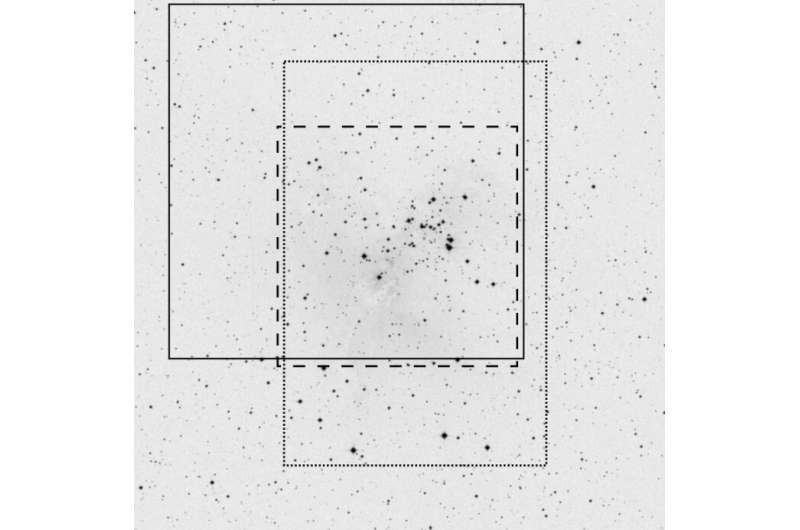February 20, 2023 report
This article has been reviewed according to Science X's editorial process and policies. Editors have highlighted the following attributes while ensuring the content's credibility:
fact-checked
peer-reviewed publication
trusted source
proofread
Dozens of variable stars detected in the open cluster NGC 6611

Using three ground-based telescopes in Chile, astronomers have conducted a search for variable stars in the open cluster NGC 6611. In result, they detected 95 variables and the majority of them are most likely cluster members. The discovery was published February 1 in the Monthly Notices of the Royal Astronomical Society.
Detecting and studying variable stars could offer important hints into aspects of stellar structure and evolution. Investigation of variables could be also helpful for a better understanding of the distance scale of the universe.
With an estimated age of less than 3 million years, NGC 6611 is one of the youngest Galactic open clusters. It is located some 5,500 light years away and hosts at least two stellar populations. Previous observations of NGC 6611 have found that it contains a rich population of the O and B-type stars, which makes it a promising target for variability searches among young and massive stars.
That is why a team of astronomers led by Gabriela Michalska of the University of Wrocław, Poland, decided to perform a variability study of NGC 6611. They observed the cluster with two telescopes at Cerro Tololo Inter-American Observatory (CTIO) and one telescope at Las Campanas Observatory, during 34 nights spanning one year.
"The observations of NGC 6611 were carried out with three telescopes located in Chile. Most of the observations were taken in no more than a few hours per night due to bad weather or as a background project," the researchers wrote in the paper.
In total, the team initially identified 6,038 stars in the field of NGC 6611, but many of them have photometry of poor quality. Further inspection of the mixed data from the three telescopes led to the detection of 95 variable stars and 61 of them have membership probability calculated from proper motions, provided by ESA's Gaia satellite, greater than 80%. Therefore, they were classified as cluster members.
According to the study, 49 stars turned out to be irregular variables. Among them, the astronomers identified 24 classical T Tauri star (CTTS) and 13 weak-lined T Tauri star (WTTS) candidates. Moreover, out of the 21 periodic variables, they found 17 other WTTS candidates. Such a large ratio of WTTS to CTTS stars suggests that the star-forming process is not very active in NGC 6611.
The observations also detected 17 eclipsing binaries (EBs) in the investigated field of view. Two of them turned out to be previously known EBs, and four other binary stars were newly identified as variables. The scientists added that eight other variables appear to be Delta Scuti pulsating stars.
The authors of the paper hope that more precise observations of NGC 6611 will result in finding more periodic variables and will allow them to calculate the standard magnitudes and colors of the stars in this cluster.
More information: G Michalska et al, A CCD Search for Variable Stars in the Open Cluster NGC 6611, Monthly Notices of the Royal Astronomical Society (2023). DOI: 10.1093/mnras/stad346. On arXiv: doi.org/10.48550/arXiv.2302.03628
Journal information: arXiv , Monthly Notices of the Royal Astronomical Society
© 2023 Science X Network




















